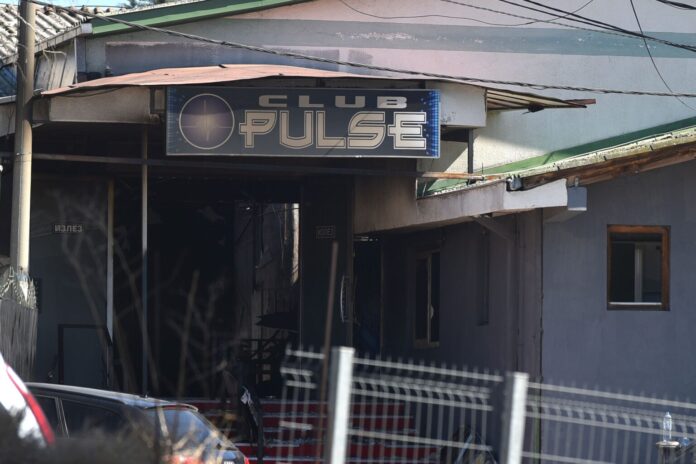Each conflict carried the potential for nuclear escalation

The development of nuclear weapons in India and Pakistan had double significance. On the one hand, both countries have become nuclear forces, significantly expanding its military arsenals. On the other hand, it became clear that any major armed conflict between them could end up with guaranteed mutual destruction. This new reality has added an additional layer of complexity to the already unstable relations between the two countries.
Thus, the issue with Kashmir got a new, significantly more dangerous dimension, as each conflict brought the potential for nuclear escalation. Therefore, all future conflicts between India and Pakistan were of limited nature, guided cautiously and under pressure from the international community
How did the British turn the Indian subcontinent into chaos (4)
« Geopolitics », fueled by the still -current military incident in the Middle East between the two units and nuclear powers, India and Pakistan, makes a short historic cut of events and reminiscent of facts that put Britain (the United Kingdom) in the focus of its analytical observation, representing London’s policy
India’s nuclear weapons test in 1974 was a turning point in South Asia’s security dynamics. Pakistan considered this test as a direct threat to its national security. Pakistan’s then -president, Zulfikar Ali Bhutto, realized that Pakistan was seriously lagging behind in the weapons and that the previous balance of power had disappeared. As early as 1965, Bhutto said: « If India makes a bomb, we will eat grass or leaves, even starve, but we will get our own. »
This statement clearly shows Pakistan’s determination to develop its own nuclear program, regardless of the consequences. Pakistan has formally begun developing nuclear weapons since 1972. After the India test in 1974, Bhutto launched the project-706 (also known as the project-786), which became a central national priority. The project manager was nuclear physicist Munir Ahmad Khan, who is today considered the father of Pakistan’s nuclear program. The program continued even after General Zia-ul-Hak took power with a coup in 1977. The first « cold » test, without explosion, was carried out in 1983. Although the project-706 was later canceled, nuclear weapons development activities continued in secret.
Finally, on May 28, 1998, just days after India’s second nuclear test (Shakti Operation), Pakistan conducted its own nuclear test in the Desert district of Haran in the Bellujistan region. The test was successful, making Pakistan the seventh country in the world – and the second in South Asia – possessing nuclear weapons.
The development of nuclear weapons in India and Pakistan had double significance. On the one hand, both countries have become nuclear forces, significantly expanding its military arsenals. On the other hand, it became clear that any major armed conflict between them could end up with guaranteed mutual destruction. This new reality has added an additional layer of complexity to the already unstable relations between the two countries.
Thus, the issue with Kashmir got a new, significantly more dangerous dimension, as each conflict brought the potential for nuclear escalation. Therefore, all future conflicts between India and Pakistan were of limited nature, guided cautiously and under pressure from the international community.
The Kashmir conflict between war and terror
Political tensions that led to the 1999 Kargil War have deep roots, and one of the key moments were the Kashmir and Jammu elections in 1987. Namely, the aspirations for independence in Kashmir continued to exist even after the area became part of India. Dissatisfaction with the central government was widespread among Kashmir’s population, and many hoped that the 1987 elections would bring political stability and restore confidence in institutions. However, allegations of electoral manipulations, voter intimidation and involvement of security forces have seriously undermined the legitimacy of the electoral process in the public eye. Many groups have decided to boycott the elections, further deepening the feeling of political marginalization and frustration among Kashmir’s population.
Although Faruk Abdullah, the leader of the National Conference (Casmir’s Chief Project in Kashmir), was re -elected, folk discontent reached the peak. Back in 1989, mass protests against the elected government broke out, and the unrest became more frequent. That same year, the Front of Liberation of Jammu and Kashmir (JKLF) carried out its first bomb attack in Srinagar, marking the beginning of wave of violence and political radicalization in the region. Pakistan provided support to rebel groups through weapons, finance and military training. In response, India deployed tens of thousands of soldiers to stabilize the situation. However, the military presence has led to systematic human rights violations, including out -of -court executions, disappearances and mass arrests, which further erodes the confidence of the local population in state institutions. Both sides were preparing for conflict, but through diplomatic channels and negotiations, the war was avoided.
Despite the fact that the war was avoided, the Kashmir situation continued to deteriorate. In 1990, the Indian government abolished parliamentary government in the Federal state of Jamu and Kashmir and established direct government under Governor appointed by New Delhi.
At the same time Islamist groups, such as the Front of Liberation of Jammu and Kashmir (JKLF), began to attack the members of the Hindu Pandit community. Threats, intimidation and attacks led to a mass exodus – about 100,000 cashmere pandits were forced to flee their homes and escape the region. Many Hindus call this « Exodus Day » event, and forced displacement has left a deep and lasting mark on the Kashmir Community.
Cargill, 1999: Culmination of a decade tension
After the turbulent period between 1987 and 1990, the region briefly entered a period of obvious stability. At the beginning of February 1999, Indian Prime Minister Aial Bihari Vajpai and Pakistani Prime Minister Navaz Sharif signed the Lahore Declaration. The purpose of the declaration was to improve diplomatic relations and de -escalate tensions between the two countries. Special emphasis was placed on preventing the race in nuclear weapons and establishing constant dialogue. At that time the declaration was an important step towards normalizing bilateral relations between India and Pakistan.
However, beneath the surface, geopolitical tensions continued to grow, and relations between the two countries remained deeply disturbed. A few months after the signing of the Lahore Declaration, Pakistan began sending military units, disguised as rebels, through the logical agreement to the Indian side of the Kargil region.
The entire area of Kargil is located in the Himalayan mountain ranges, at an altitude of over 5,000 meters, which made the defense difficult. Pakistani forces were well prepared and well established in the higher places, providing a tactical advantage over Indian troops. The Indian Army soon revealed that alleged rebels were actually members of official Pakistani troops, after which the Vijay operation began to restore occupied positions. Indian forces were forced to carry out frontal attacks on the hill, in extremely difficult mountain conditions, resulting in many victims. However, thanks to air superiority and persistence in ground operations, India has managed to release most of the territory under Pakistani occupation. Under strong pressure from the international community, especially from the United States, Pakistan was forced to withdraw from the region.
The Kargil War remains recorded as the highest armed conflict in history, as it has been at exceptional altitudes in the Himalayan mountain range. It is also important that, despite the fact that the two countries possessed nuclear weapons, the conflict was led exclusively with conventional military means – without the threat of nuclear escalation.
This conflict had significant consequences for both countries. Pakistan has violated his international reputation because of its actions in the region, which were considered a violation of the Lagos Declaration and the Simla Agreement. Relations between civil and military society in Pakistan have deteriorated seriously, and just months later, General Pervez Musharraf – the architect of Cargil operation – carried out a coup and ousted then Prime Minister Nawaz Sharif.
For India, the Kargil War was a great political and military victory. The Indian public and the media have strongly backed the government, and Prime Minister Atal Bihari Vajpai’s popularity has increased significantly. The conflict experience has encouraged India to implement broad reforms in the defense sector, including modernization of the armed forces and better intergency planning.
I thought Pohovski
(continues)








